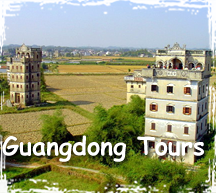Guangzhou Travel Guide
Location:Guangzhou, the capital city of Guangdong Province, is located in southern China on the Pearl River, about 120 kilometers northwest of Hong Kong. Guangzhou is the starting line of Silk Road of the sea.
History:
The first known city built at the site of Guangzhou was Panyu founded in 214 BC.
Panyu became a provincial capital and remains so today. In 226 AD, the city however became the seat of the Guang Prefecture.
The Portuguese were the first Europeans to arrive in Guangzhou by sea in 1514, establishing a monopoly on the external trade out of its harbour by 1517.
After several attempts, British also gained a foothold into Guangzhou and in 1685, China's Imperial Qing government gave in to the pesky foreigners seeking its wares and opened Guangzhou to the West.
A very large thorn in the Qing's paw, the imperial commissioner was ordered to eradicate the opium trade and in 1839, Chinese forces seized and destroyed 20,000 chests of the drug.
In the twentieth century, Guangzhou was the seat of the Chinese Nationalist Party founded by Dr. Sun Yatsen.
Transportation:
Guangzhou boasts good domestic transportation links to most major Chinese cities and Hong Kong. There are also a few flights to International Asian and Australian destinations.
Guangzhou Baiyun International Airport is about 28 kilometers from the city center of Guangzhou. There are regular domestic flights to Beijing, Shanghai, Kunming, and Hong Kong.
There are two train stations in Guangzhou; the old one in the center of town and a newer one to the east of the city. Trains leave from both stations for Beijing, Shanghai, Qingdao, Kunming, Chengdu and Xian.
There are two major bus stations in Guangzhou. The Provincial bus station is next to the bus station serves Guilin, Macau and Hong Kong. The Liuhua bus station serves most Guangdong destinations, Hainan, sleeper buses to Guilin and Shenzhen.
Hotels:
There's a relative lack of budget options in Guangzhou, but mid-range and top-tier hotels can be very reasonable for what you get. Though it might not work at international five-star operations and it certainly won't work during peak periods, it's often worth pushing for a discount when booking.
Business guests will likely find the best choices in the high-rise Tianhe District, where the major railway station is located along with the city's business district.
Tourists might find it more pleasant and convenient to base themselves on Shamian Island, with better access to the city's historic and cultural attractions.
Dining:
Except the plane and the stool, Guangzhou people eat everything in the sky and on the earth.
Cantonese cuisine is well-known for its blend of color, fragrance, taste and presentation, and it is ranked among the top four in the country.
In particular, dim sum, a delicate pastry, is famous for being simple yet delicious. Local customs have also played a major role in the development and diversity of Cantonese cuisine, as it is often said that Cantonese people eat everything that swims except a submarine, everything that flies except an airplane, and everything with four legs except a table.
Do not ever be afraid of ordering too much - almost every restaurant in Guangzhou will have a takeaway option, just ask to da bao (take-out) and your leftovers will be packaged up in a sealable, microwavable container to be eaten at home.
Nightlife:
As one of the first Chinese cities that was opened to the outside world, Guangzhou nightlife is colorful.
There are three famous bar streets in Guangzhou, namely Binjiang Road Bar Street, Huanshi Road Bar Street and Bai’e Tan Bar Street. Along these bar streets, there are a great number of popular pubs and bars.
Cantonese Opera is popular in Guangdong, Guangxi, Hong Kong and Macau. The dialogue and singing is in Cantonese. The voices rise and fall in ever changing rhymes, and the melodies are harmonious and graceful.
This is a one to two hour cruise in the evening and a great way to see the Guangzhou skyline along the Pearl River, including a light show at Bai-E-Tan. Tickets for the deluxe dinner cruise can be bought from most high-end hotels.
Weather:
Guangzhou enjoys a typical subtropical monsoon climate, the temperature is moderate all the year round. The annual average temperature is 21℃ and the average precipitation is around 1,624-1,900 millimeters.
Guangzhou with the most suitable climate for crops, plants, especially flowers, it has long enjoyed the reputation for "the City of Flowers", and the kapok has been selected as Guangzhou's city flower.
The best time to visit Guangzhou is in spring and autumn, when is cool and with the most comfortable temperature within the year.
Attractions:
Yuexiu Park
Covering an area of 860,000 square meters, Yuexiu Park is the biggest park in Guangzhou.
Yuexiu Park is a park of mountains. There are a great many beautiful views and historical relics in the park .It belongs to the ending ranges of Baiyun Mountain, stretching for 3 kilometers from the east to the west with an altitude of over 70 meters.
The Five-Ram Sculpture is one of the most famous structures in Yuexiu Park, others like the River View Pagoda of Ming Dynasty, the Tomb of King Nanyue of Eastern Han and the Cannons of Ch'ing Dynasty are also very famous.
If you want to travel around Guangzhou, Yuexiu Park is a good place for you to know about the city.
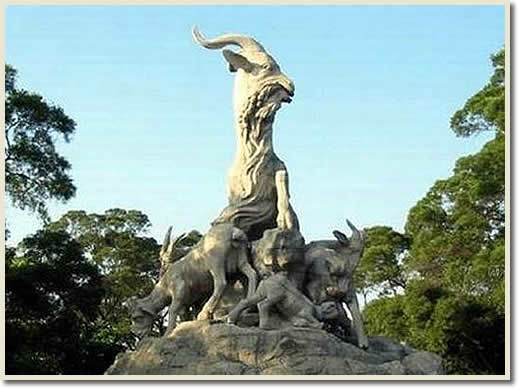
White Cloud Mountain
White Cloud Mountain is a mountain located about 17 kilometers (10 miles) north of Guangzhou, China where the White Cloud Mountain minnow was discovered.
White Cloud Mountain gets its name from the fact that every time the sun shines after rain a band of clouds circles the mountain. The mountain covers an area of some 28 square kilometers.
Baiyun Mountain is the best place to get a bird's eye view of the Guangzhou city. What’s more, there are many famous poems and words on the mountain that written by Chinese well-known poets and scholars.
White Cloud Mountain is a bit rectangular, measuring 7 km from south to north, and 4 km from east to west. It is one of the oldest mountains in Guangzhou dating back to 400 million years ago.
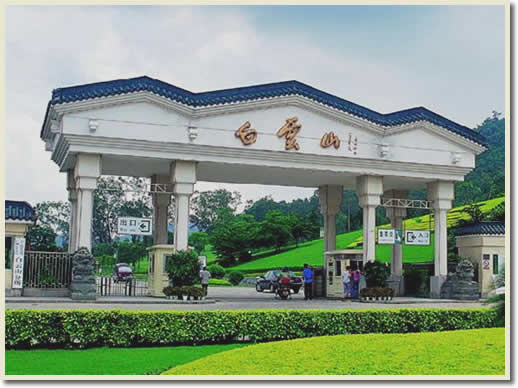
Chen Clan Academy
Established in 1894 during the Qing Dynasty, Chen Clan's Academy sits in western Guangzhou and holds a diverse collection of folk art.
Chen Clan Academy used to belong to a wealthy family by the name of Chen and now houses many articles including ivory sculptures and artistic statues.
Chen Clan Academy was added in the list of "Cultural Relics of National Importance under the Protection of the State" in 1988.
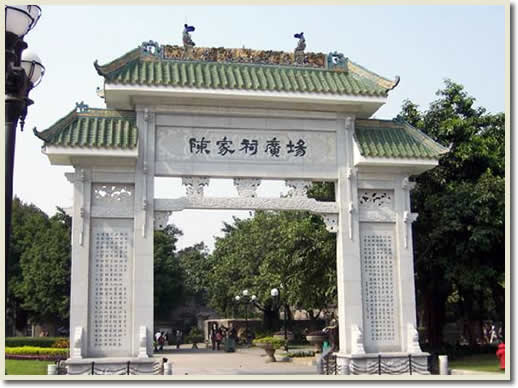
Guangxiao Temple
Guangxiao Temple is situated at the north end of Guangxiao Road in Guangzhou. It is a popular pilgrimage site for Zen Buddhists.
The temple has been destroyed several times by fire, and the current buildings date only from the mid 19th century. Many famous monks from home and abroad have come to preach here since the Eastern Jin Dynasty (317-420). In the temple, there are the Mahavira Hall, Sleeping Buddha statue, bodhi trees and East and West Iron Pagodas.
The site is a must visit on sightseeing tours in Guangzhou.
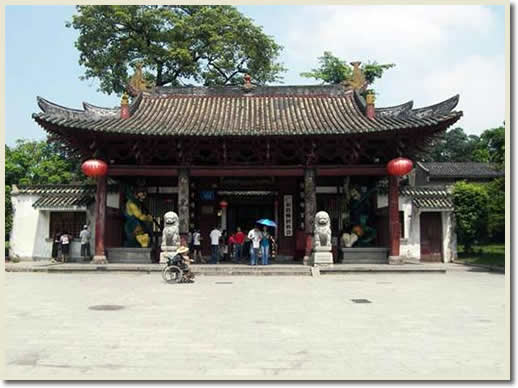
Questions & Answers:

